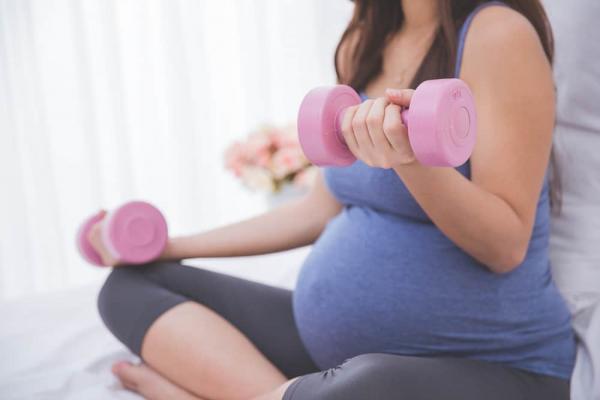
Historically, women rested and hid their condition of being "in the family way" while they were pregnant. Doctors discouraged them from participating in too much physical activity, fearing that it would harm the baby. That's not the case now. Nearly all medical professionals now agree that exercise provides numerous benefits for mom and baby.
Read on for the truth behind these five exercise misconceptions:
1. If you weren't active before, you shouldn't start an exercise program during pregnancy.
This is false. Instead, the Department of Health and Human Services recommends that pregnant women should exercise a minimum of 30 minutes a day or 150 minutes per week.
Benefits for moms who work out regularly while pregnant include less risk of depression, high blood pressure and even a lower rate of gestational diabetes. Additional benefits include:
-
Weight management
-
Improved sleep
- Elevated energy levels
-
A reduction in swelling, bloating, constipation and backaches
-
Stronger muscles and improved overall strength and endurance.
Some studies also suggest that working out can benefit your child. Things like a stronger heart, better athletic ability and improved intelligence for your child are reason enough to lace up your tennis shoes. If you aren't in the habit of working out, you might want to start with something as non-stressful as walking, which requires no special equipment except for a supportive pair of shoes.
2. Do not elevate your heart rate above 130 BPM when pregnant
Nope! Every woman is different and so is every heart rate. Doctors have now rejected the idea of a target heart rate and instead use a rate of perceived exertion, or RPE. The RPE lets your body guide you instead of focusing on a certain set number across the board.
3. Avoid working your core during pregnancy
This misconception is also false. Your core muscles are abdominal muscles that wrap around your middle, providing support for your back as well. Doctors state that abdominal exercises can improve your posture and help accelerate labor and delivery. Julie Tupler, R.N., one of the authors of "Lose Your Mummy Tummy," writes that a strong core will reduce back problems, ease with labor and accelerate recovery.
However, there are some restrictions. Do not lie on your back starting with the second trimester and don't over exert yourself.
4. Avoid jostling the baby with vigorous exercise
This old wives' tale is false. Exercises like running are safe as long as you feel healthy. However, your body might warn you if you feel "off," so stop immediately if in doubt. Slow down as your pregnancy progresses and adjust your pace. If you can't keep up the pace, take a walk instead.
5. Avoid lifting anything over 25 pounds when you're pregnant
It is true that lifting objects over 25 lbs. while pregnant might be riskier for some women. If you are at risk for premature labor, check with your doctor about lifting items after the first trimester. However, most medical professionals agree that it's safe to lift items up to 25 pounds. In some cases, you can also lift items up to 50 pounds (like your growing toddler) while pregnant. Use the following schedule (and your doctor's advice) as a guideline:
-
Regularly lifting 50 pounds or more: Stop work by week 20 of your pregnancy.
-
Occasionally lifting more than 50 pounds: Stop work by week 30.
-
Repetitive lifting of 25 to 50 pounds: Stop work by week 34.
As always, consult with your personal doctor before making changes to your diet and exercise, especially if you are pregnant.

